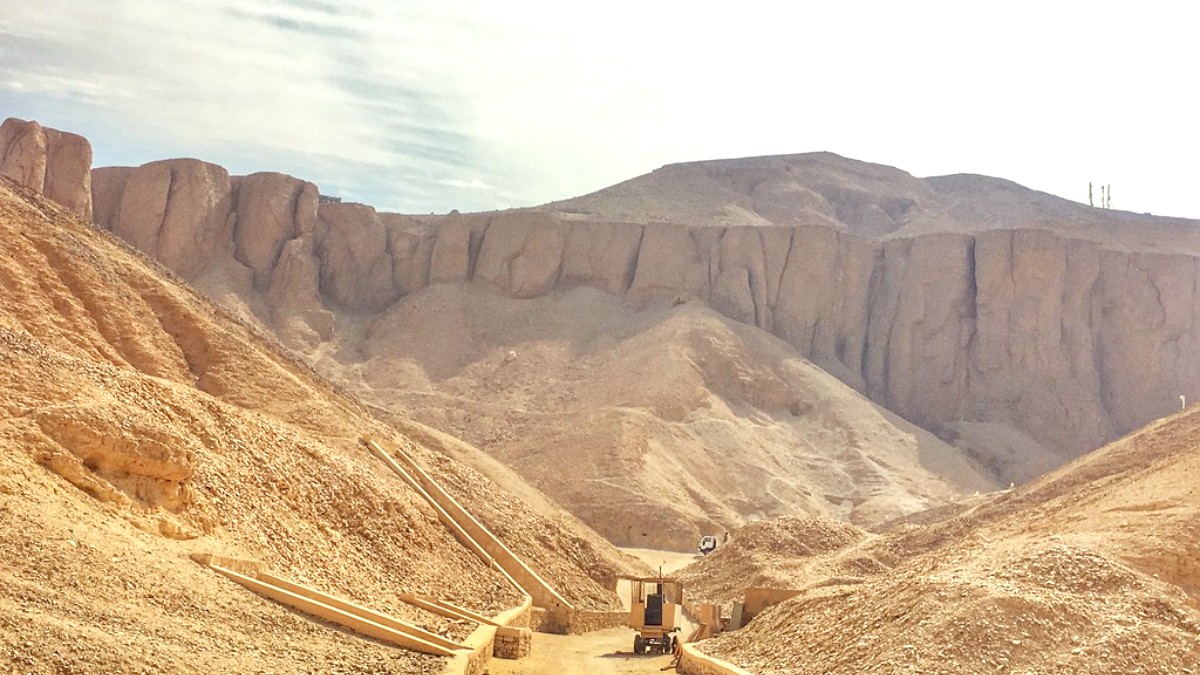
Luxor, Egypt
The West Bank, reached by a short ferry ride or bridge, holds the vast necropolis of ancient Thebes. Here, discover the Valley of the Kings, the Valley of the Queens, the Temple of Hatshepsut, and other mortuary temples and tombs of nobles.
Luxor, ancient Thebes, functioned as the capital of Egypt during the New Kingdom (1539 BC to 1075 BC). This era witnessed the reigns of famous pharaohs like Hatshepsut and Ramesses II.
The city's religious and political influence grew as pharaohs dedicated vast resources to building temples and elaborate tombs for their afterlife.
The Valley of the Kings offered a departure from earlier pyramid construction. New Kingdom pharaohs sought security by carving hidden tombs deep into the rock. This shift in burial practice reflects a deep belief in the afterlife and a resolve to secure passage into it.
Each tomb within the Valley is a masterpiece of ancient Egyptian art and engineering. The wall depictions are not mere decorations; they are religious texts, spells, and narratives guiding the deceased pharaoh through the underworld to achieve immortality.
Famous for its nearly intact treasures.
Known for extensive, well-preserved decorations.
Features vivid astronomical ceilings.
Oldest known tomb, unique oval cartouche shape.
Ongoing archaeological work continues to reveal new details and sometimes new discoveries.
The Valley of the Kings, locally Wadi el-Muluk, forms a royal necropolis on the West Bank of the Nile River. This site served as the burial place for pharaohs and powerful nobles of the New Kingdom (18th to 20th Dynasties) of Ancient Egypt.
The Valley comprises two main branches: the East Valley, where most royal tombs are located, and the West Valley (Valley of the Monkeys), which holds fewer but significant tombs.
The Valley of the Kings is an UNESCO World Heritage Site, recognized for its unique collection of tombs, decorated with intricate mythological and religious texts and scenes.
A visit to the Valley of the Kings is a journey through ancient beliefs. The rich imagery and texts on the tomb walls explain the pharaoh's path to the afterlife. Study these details; they offer a deep window into a complex belief system.
Luxor offers more than just the Valley of the Kings. It acts as a gateway to numerous other historical marvels on the West Bank, including the Mortuary Temple of Hatshepsut, the Colossi of Memnon, and Medinet Habu.
On the East Bank, Luxor Temple and the massive Karnak Temple Complex await your exploration. This guide helps you plan your trip to Luxor and the Valley of the Kings, promising a memorable experience.
A striking multi-terraced mortuary temple.
Two massive stone statues of Amenhotep III.
A vast complex of temples, chapels, and pylons.
This guide explores travel planning, local transport, dining, and more.
As of today, 63 tombs and chambers found, ranging from simple pits to elaborate complexes.
Burial place for pharaohs of the 18th, 19th, and 20th Dynasties.
Recognized for its collection of intricate mythological and religious texts.
The Supreme Council of Antiquities of Egypt actively manages the site, focusing on conservation.
Access to individual tombs varies, with some open on rotation to preserve the delicate art.
Archaeologists continue to study and uncover new findings within the Valley.